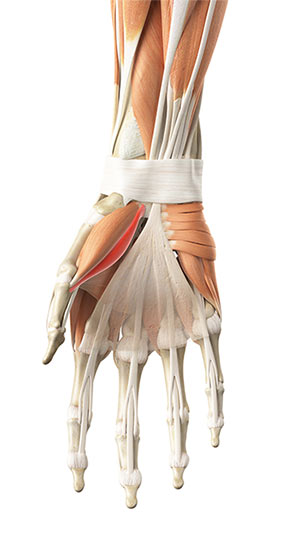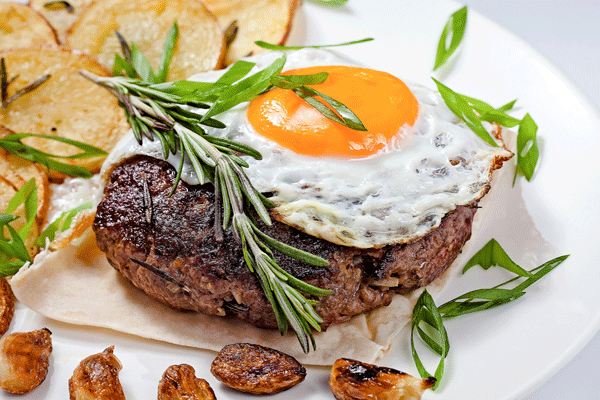
Exercise is often painted as being solely to do with one of two goals: getting buff or getting shredded. This simple, reductive approach is one of the reasons that the current exercise culture doesn’t address the major benefits of exercise and is underrated in a large portion of the population.
The reality is that exercise goes beyond muscles and fat. Perhaps the best example is the proper strengthening and protection of the joints, bones, and connective tissues.
Today we’re going to discuss why your exercise should involve more than just big muscles or great conditioning. Specifically, you’re going to learn why tendons matter so much and how to keep yours healthy.
Muscles Are Good But They’re Not Everything
The focus on muscles is invariably justified: they produce force, they look great, and they’re the main workers in your workouts. However, they’re not the sole goal of your training and blinding yourself to the importance of other tissues can lead to serious injury over time.
There are a few key factors that make tendons as important as muscles when it comes to your goals in training and directing workouts towards better tendon strength and resilience.
Injuries Happen in Joints
The vast majority of the injuries you’re likely to run into are going to happen in the tendons themselves, or at the attachment of tendons to bones/muscles. These are the most common forms of debilitating injuries.
Debilitating is definitely the right word: injuries are the fastest way of ruining your own training and progress. They also interrupt daily function, and may even be made worse from something as simple as walking, cycling, or driving.
Investment in your own long-term success means preventing these injuries before they happen. Proper strength, conditioning, and ‘mobility’ in the tendons is the clear method for reducing these risks. These are specific, directional adaptations that require training for long-term benefits.

Joint Imbalance: Injury and Impingement
The proper conditioning of muscles, tendons, and their interactions are key players in joint balance. No muscle is attached to a joint without tendons and you can’t move without moving through a tendon. The more force you apply, the more tendon ductility and strength you’re going to need.
Proper joint health is tied up with the health and demand of each tissue: bone, cartilage, ligaments, and of course the tendons themselves. The health of tendons ensures proper distribution of stress and force through these tissues – preventing injuries and impingements elsewhere.
Strong, healthy tendons knock on to better joint and muscular health rapidly. You may also find that they improve existing joint pain or mobility issues in the short-term. These are serious benefits to your quality of life as well as the trajectory of your athletic performance.
Tendinitis and Connective Tissue Disorders
The line between functional, healthy tissue remodeling and chronic tendon diseases is a thin one. Properly preparing your tendons for exercise in the future ensures you stay on the functional side and avoid the chronic degenerative issues that are so common and debilitating in the population at large.
There’s not much point exercising intensely if the end-result is pain and immobility (unless you’re an Olympian and need to prioritize short-term performance). The proper care of the tendons is one of the factors in more sustainable long-term progress and can’t be ignored.
Setting the foundation now – and building a functional surplus of tendon conditioning before you challenge those tendons – ensures maximum performance. It also prevents the ever-present risk of age-related connective tissue decline and associated immobility/joint problems/frailty.
Whether you’re training for performance or longevity, the correct response is to build a foundation of sustainable results and progress. The risk of chronic connective tissue disease is so significant and common that you can’t overlook these issues.

Tendons Will Take Damage
Exercise alone is enough to induce tendon damage: it’s not all about acute, sever injury. It’s a long-term process too, where the cumulative effect of exercise and life can produce pain and disease in the tendons.
Since tendons are designed to distort as a way to store energy, their role in exercise is enormous. They’re the key player in plyometric exercise, repeated motions, and even stretch-mediated exercise like a squat.
These cover a huge range of exercises and – while they offer different kinds of stress and strain – they are all relevant contributors to tendon degradation. This makes tendon strength a relevant consideration for the strength and performance you can build, as well as affected by it.
This interplay is crucial because tendon capacity is central to exercise performance, and vice versa. There’s no way of avoiding it – and you shouldn’t try, since it behoves you to have stronger tendons for more effectively transferring force.
The damage is inevitable, but the proper conditioning of the tendons provides a stronger tool for exercise and athleticism, as well as a system for better recovery from damage.
Strengthening the Tendons with Exercise and Nutrition
So, the tendons are important, and we’ve established that you can’t move without them, you can’t avoid damage at some level, and you shouldn’t try. The best approach – then – is to strengthen them and build a huge surplus of tendon strength and health.
But how do you achieve something like this? There are a few ways you could contribute to better tendon strength. These break down into dietary and training approaches, and the combination of the two is the best approach!
The mechanisms of recovery and strengthening are closely related – as in muscle tissues. The same things that build muscle are the best for repair and recovery, and the same is true for tendons.
Proper loading, repetition, and nutritional choices are the cornerstones of proper tendon repair, strengthening, and conditioning. These are the fundamental units of good tendon training and should be varied only by load and intensity, with recovery being a more gentle process.
Training Stimuli
There are 3 key focuses you need to apply: specificity, proper repetition/load, and the correct pacing/types of exercise.

Directional Specificity and Fibril Alignment
The appropriate approach to conditioning the tendons – before injury and to prevent it – is the patient accumulation of volume in crucial movement patterns. The strengthening of tendons is crucially specific to the direction in which they’re stressed.
The development of fibrils (the single strands in tendon tissues) is reactive to the direction of the stress and the overall movement pattern. This necessitates conditioning joints in the positions you’re going to be loading, but also in the extraneous ones you might not have trained – and thus may be weaker in.
The proper training stimulus is likely to involve a wealth of different movement patterns, but prioritise those that are aimed at the joint and movement specifically. For example, the majority of ankle conditioning should be in dorsi- and plantar-flexion, with less time committed to in/eversion.
The simple point here is this: you need to condition joints that you expect to take a lot of stress, but also to be aware that something will go wrong eventually. Proper ‘unusual’ conditioning directions ensure you’re safer and healthier when this inevitably occurs.
Repetition is the Key
The tendons don’t have the same abundant blood supply that your muscles have. The end-result is that they’re a slower-metabolising tissue, but they’re also very nutrient-demanding – especially the outer layer of tendon tissue.
The proper application of repetition is great here because it introduces a much greater bloodflow to the region and the delivery of nutrients to these semi-vascular tissues can facilitate growth and recovery. This is why most of the conditioning work you’re likely to do looks like ‘pump’ work.
In many ways, the pump bodybuilders chase and the joint conditioning we’re talking about overlap closely. They both rely on the proper provision of nutrients and the increased nourishment of tissues – the main difference will be the choice of exercise, loading, and the joint-ranges employed.
The repetition ranges for joint conditioning are very high, and best met with loads that reflect this. Bodyweight is the most commonly applied for lower body muscle groups, since they have naturally larger endurance capacities and are loaded at almost all times.
Appropriate Loading
Loading for upper body muscle groups may also be bodyweight, but the relative size and strength makes this a little more difficult for beginners. It offers a level of challenge some may not be able to deal with – and there are significant alternatives that offer better training stimuli.
Free weight and fixed-plane resistance machines both offer appropriate alternatives. Exercises like hamstring curls can be used with light weight to introduce greater loading for higher repetitions. Equally, lighter dumbbells for flyes and similar exercises offer a great way of loading for higher reps in a way that is stretch-mediated but doesn’t have the same tendon damage risks.
Eccentric and Isometric Contractions
The proper recruitment of non-standard types of exercise is one of the best ways to improve your joint and tendon health. Isometric and Eccentric exercises are the key alternatives to normal strengthening exercises.
Isometric exercise is where you’re contracting the muscles to not move. This might be an L-sit, holding a deep lunge, or a leg extension where you’re just trying to keep the legs straight against the weight.
These movements strengthen tendons without the cyclical stretching and deformation that are seen in regular exercise. They’re great for strengthening weak points and conditioning tendons at the end of a workout – especially given their specificity to the movements you’re training.
Slow-eccentric exercises are those where the ‘lowering’ portion of the movement is intentionally slowed down as much as possible. These are great for the proper coordination of muscles, but also show increased involvement in the tendons themselves.
This is a great way of training with lighter movements, since it also induces more muscle damage relative to load. Properly managing your eccentric loading is crucial for the best results in tendon health, since it also represents a risk in heavier loads.
Both isometric and eccentric loading have their niche benefits, but they should both be considered as adjuncts to your tendon strength and health. They combine well with the other things we’ve mentioned in this article and the benefits they provide compound really well.

Nutritional Interventions
The dietary factors in tendinitis can’t be overlooked: the raw materials for tendon repair and growth are ‘essential’: your body can’t produce them by itself. Proper dietary support for tendon health is thus absolutely necessary.
The proper training of the tendons is no use if the nutritional environment doesn’t conduce to the proper shuttling of nutrients for the regeneration process. There are only a few key factors in this process, but they are likely to be overlooked in most people – and thus limit tendon health.
Vitamin C for Tendons
Ascorbic acid – known as vitamin C – regulates the synthesis of collagen. Type-1 Collagen is the main form of tissue found in the tendon’s structure and needs to be repaired and replaced over time accordingly.
Vitamin C thus limits the rate of tendon repair/recovery and strengthening. Supplementary levels of vitamin C – especially combined with proteins like Gelatin – have been shown to support the production of Collagen inside the body.
This kind of low-level nutritional change could provide significant benefits – especially if you’re in the recovery process from something like tendinitis. The proper nutritional intervention isn’t just healthy eating – it’s directly effective in your recovery and progress.
Total Protein Intake
Protein intake is a considerable factor in dietary quality so you’re probably already paying attention to it. If not, you really should start as soon as possible – it’s a key factor in a ton of health markers.
However, one of the overlooked roles of dietary protein is as the main constituent nutrient for the repair of connective tissues. Tendons and other joint tissues fall into this category, so it’s not surprise that dietary protein is a factor in the proper recovery and growth of collagenous and other mechanically-loaded tissues in the tendons.
If you’re concerned with the proper strength and recovery of muscles, all you need to do is apply this same philosophy to the tendons themselves. This is more specifically useful if you focus on the role of leucine in your diet and pay it some specific attention.

Leucine is Important
One of the most important structures in the tendon is the small leucine-rich proteoglycan (SLRP). This name makes it sound ridiculously fancy, but the crucial point is that leucine is a significant player in the second largest tissue component of tendons.
The dietary intake of leucine is already a huge deal since it’s a signalling amine for the development of new muscle tissues. This combined with its ‘essential amino acid status’ have brought leucine to some kind of nutritional fame.
The role Leucine plays in tendon proteins and fibrillation is also key, even if it’s not as glamorous as muscle gains. Getting plenty of leucine into your diet is a significant step towards improving the overall rate of tendon fibril regeneration and growth.
This is something you should be working on already, but it can be supplemented actively to ensure the best results. This should look like 6g per day, so focus on leucine-rich protein sources and put some active effort into them.
Tendon strength, conditioning, and repair are all considerable factors in your long-term progress. Putting the time into understanding them – how training and nutrition affect them – can pay off manifold in future.
Closing Remarks
There’s never a bad time to have stronger, healthier joints and the proper training of connective tissues is a big deal for everyone. Putting time in before you get injured means you can reduce your overall injury risk and simultaneously improve your performance.
The essence of good training is better preparedness and reduced injury risk – and tendon/joint conditioning manages to do both at once.







